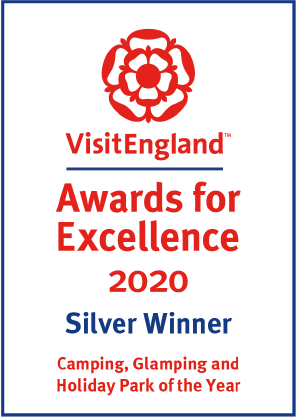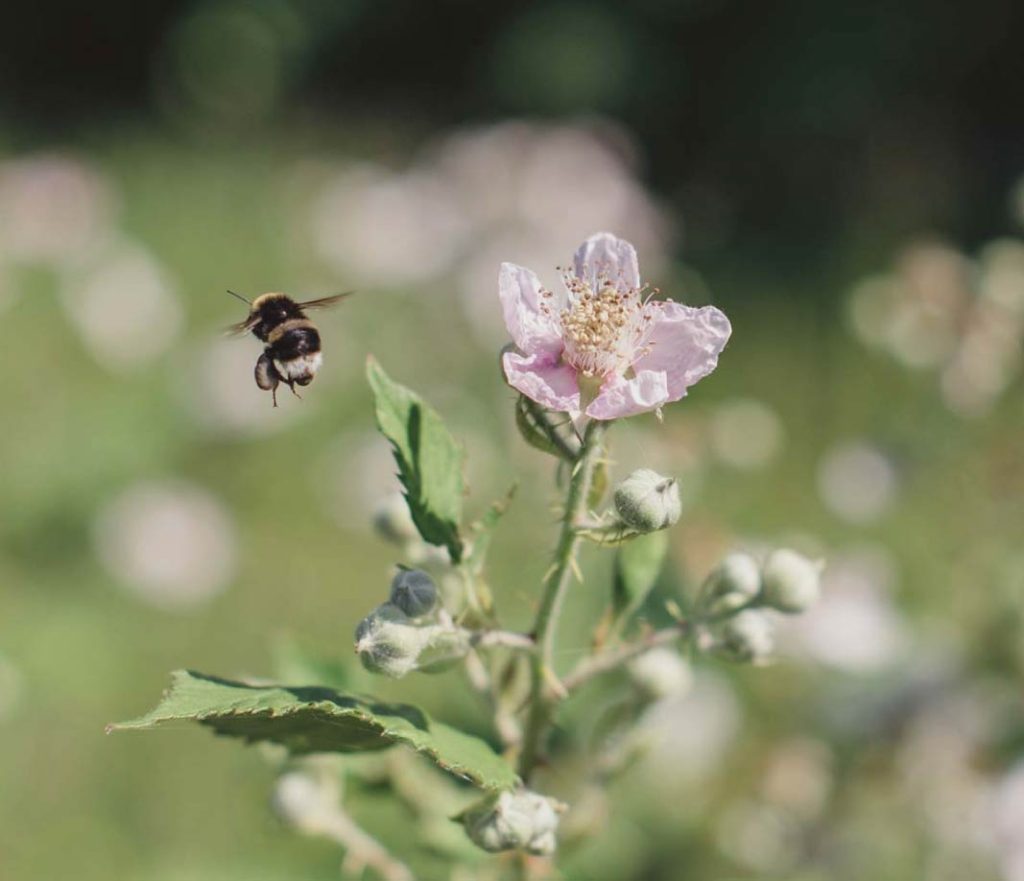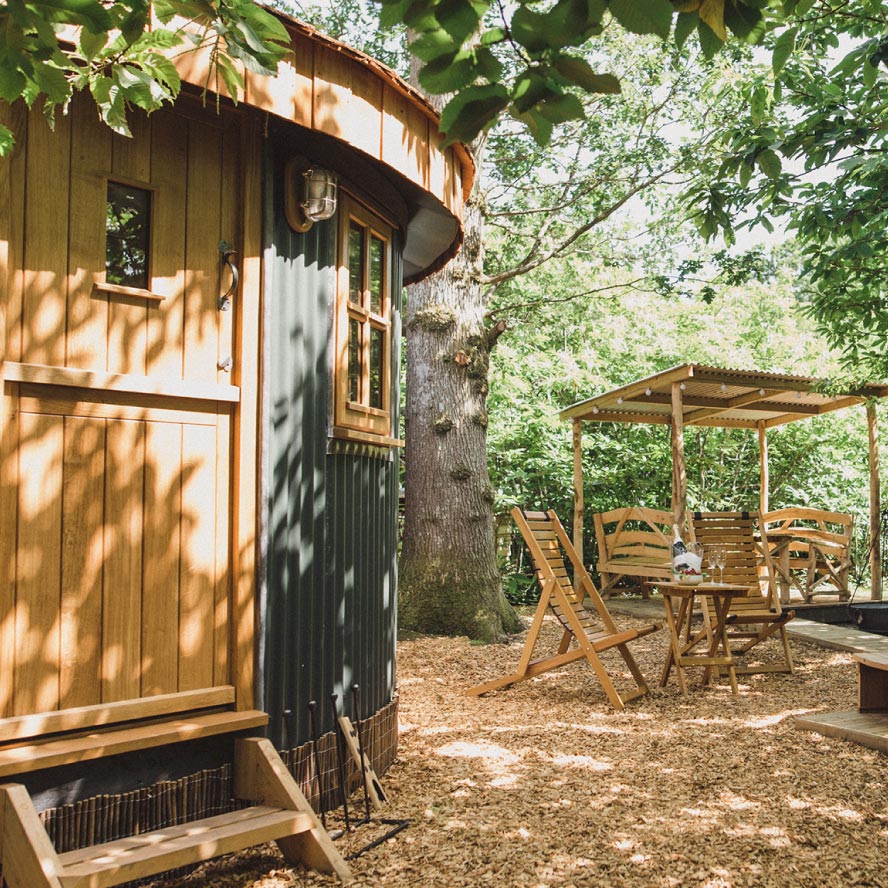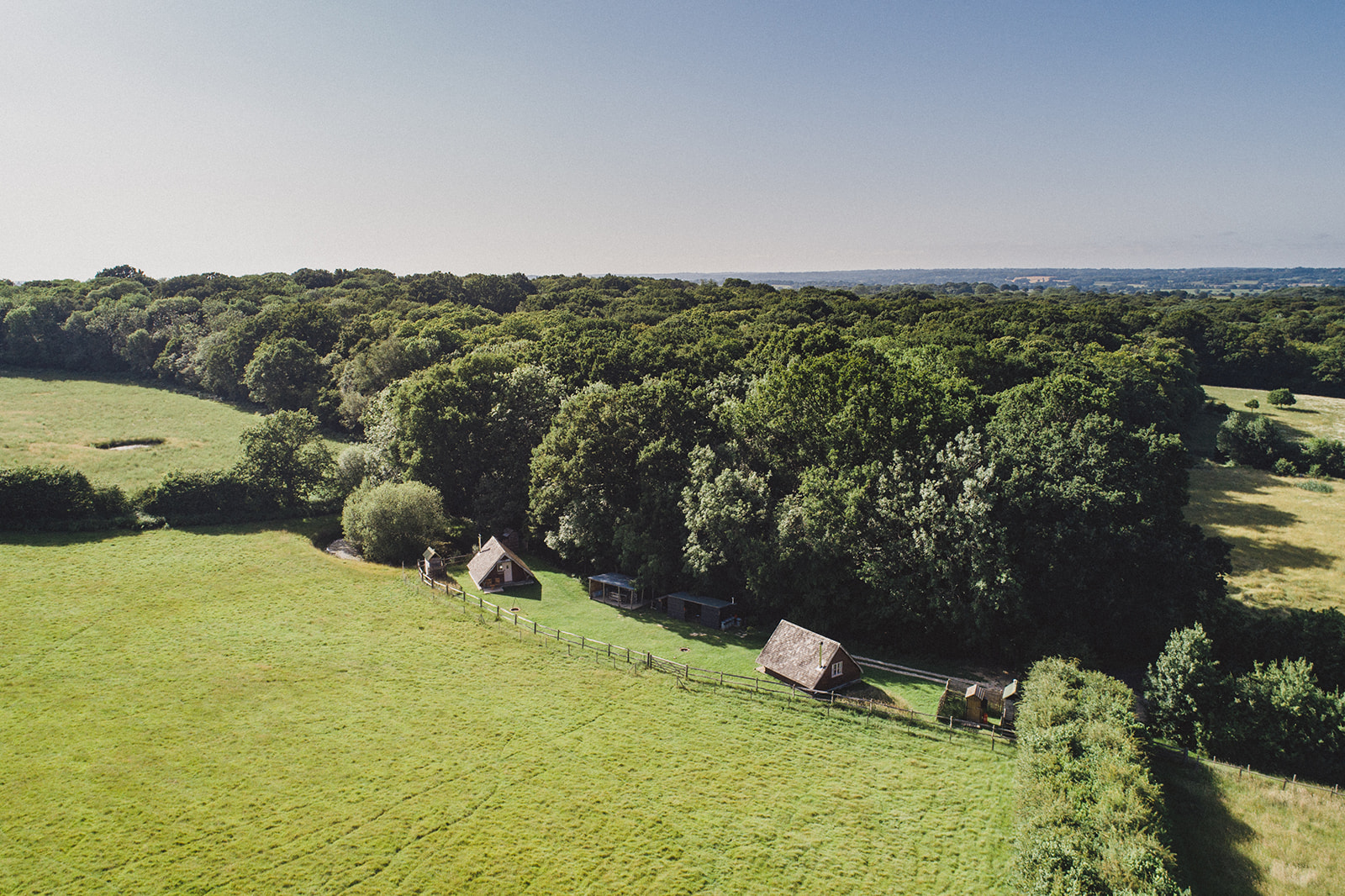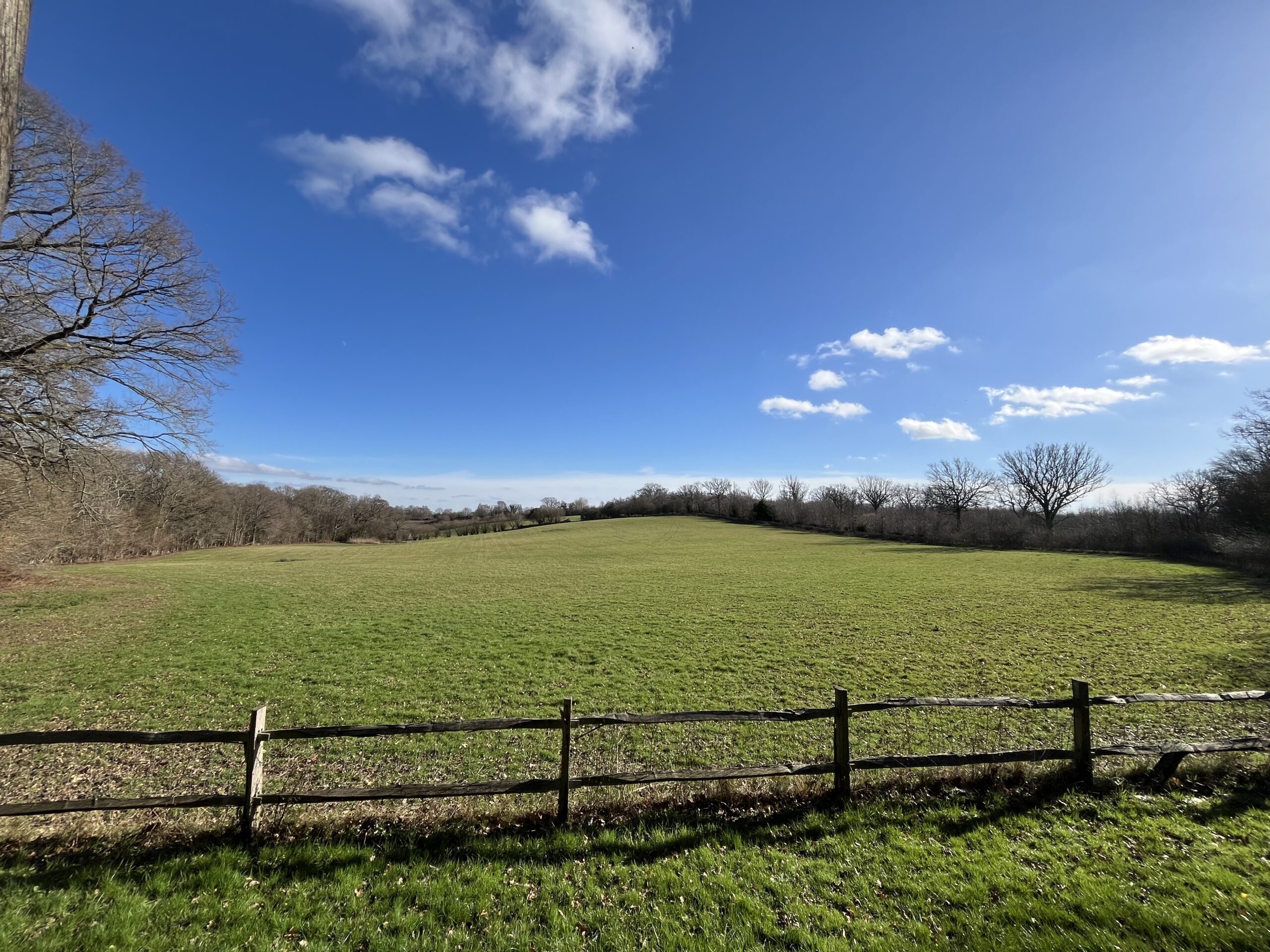This summer has been an eye opener. Not least because it’s been the most challenging one to date for our 14 year old business, but also because it has made me question how we communicate the authentic appeal of Swallowtail Hill.
We’re the OGs of glamping these days for sure. When we began, glamping was a term not widely adopted. Our local authority was rather suspicious of the whole idea when we submitted our planning application! But we knew we weren’t alone in recognising the value and importance of spending time close to nature, taking life more slowly and disconnecting from the busy-ness of everyday life. We were at the beginning of a movement that has grown over time.
When the country first emerged from lockdown glamping had its moment – people couldn’t go abroad but could holiday in the UK in an easy, socially distanced way and the industry exploded with new sites popping up all around the country. It seemed at times that anyone with a bit of back garden was sticking up a pod or a yurt and entering the industry – the opportunity was there. No matter, we thought – choice is always good.
But a couple of years down the line and that popularity is now verging on over supply. Add to that a summer of poor weather and many have opted for European holidays in the pursuit of sunshine leaving businesses like mine with availability in high season for the first time ever. The term ‘glamping’ has become ubiquitous, it can mean anything from a field of bell tents, through to a five-star luxury treehouse and pretty much anything in between.
So, we have to shout louder and make clear how we differ from 90% of places out there and therein lies the rub.
Most glamping style accommodations promise time spent in nature. Few are actually on a private nature reserve with over 30 years of conservation work like ours. Many claim the benefits of peace and quiet, but then offer Netflix and woodland movie screens. Many offer identikit accommodations cheek by jowl with the next, few offer unique designs and attention to detail when it comes to making your stay well equipped and easeful but remain sustainable. Many are in great locations, but few require you to leave your car in the car park and be driven to your accommodation by us meaning that you may not see another soul during your stay. Some commoditise the idea of getting away from it all by asking you to lock your phone in a box for the duration of your break – good gimmick for a digital detox – but we barely have a mobile signal here so guests just naturally never bother with devices and enjoy the big outdoors. We’ve never thought to make a big deal about it, we simply thought it came with the territory – to us spending time on devices and spending time in nature are the antithesis of each other. Plenty make claims about their eco credentials – but not all walk the walk, even if they talk the talk.
Sour grapes you might say, stop moaning just tell people what you do differently! Fair point, and we do, constantly. But here’s the thing – or two things. First, greenwashing. The EU has introduced very robust anti greenwashing claims regulation. Really tough ones. In a fit of unexpected co-operation the UK regulator has replicated these. I believe much of the glamping industry is now at serious risk of running foul of these regs because the public is being conned. Strong words I know, but I believe it. Second point – social media. I’ve always had a healthy scepticism about the machine that this is. We’ve been preaching the benefits of time away from screens and getting outdoors since we first opened. So I consider it more than ironic that the only way we can effectively reach people with a proposition about spending time in nature and disconnecting from our phones, is by constantly popping up on their social media feeds. Indeed, some might argue it hypocritical.
I’d love for there to be another way. A slow way of finding about the slow things in life and their advantages. It feels jarring that we’re offering the benefits of an off-grid experience but expecting a 30 second reel set to trending music to be the trigger point for people to book. And if I’ve noticed anything over the last 14 years it’s sharp decline in attention span – no judgement, I’d include myself in that too. But I’d estimate as many as two thirds of my guests turn up having just looked at the pictures on my Instagram or website. Few bother to read the captions or the detail. That’s all well and good, but how do you get across a subtle and nuanced message with a tool as blunt as Instagram?
There’s a restaurant in the States – The Lost Kitchen – which is one of the most sought- after dining experiences in the country. You’ve probably read about it. It’s in a tiny town of just 700 people, Freedom, Maine. It only opens its doors for a short season May to October and it only has one sitting a night of around 50 covers. There is one set menu which changes daily and is seasonal, local and exceptional – if the reviews and photos are anything to go by. It’s one of the few brands I can cite that has managed to be utterly authentic to its values – even in its marketing – because you can’t book. The restaurant is enormously popular but your money or influence won’t get you a table. Each April they open their postbag for postcard submissions – they get around 20,000 each year – and they pick cards at random and telephone those successful to tell them which night across the season they’ve secured a table for, and people travel from all over the country to be there. Now I’m not suggesting that there are many businesses who could survive on this perfectly slow, and slightly whimsical way of marketing, in this instance it’s the quality of the experience promised that ensures this method works. But it is proof that people are capable of respecting, appreciating and valuing brands who are authentic to their core. And while the Lost Kitchen of course has a social media presence, they aren’t slaves to it, as many businesses feel they must be in order to fill their orders/reservations.
Finding a way of reaching those people who most ‘get’ what you’re offering, without diluting said offering in the process is the challenge for a heart centred business like ours. I’m in pursuit of a new way of doing things that inspires my audience but doesn’t sell my business short, does it exist? Answers (maybe) on a postcard?!
We’re the OGs of glamping these days for sure. When we began, glamping was a term not widely adopted. Our local authority was rather suspicious of the whole idea when we submitted our planning application! But we knew we weren’t alone in recognising the value and importance of spending time close to nature, taking life more slowly and disconnecting from the busy-ness of everyday life. We were at the beginning of a movement that has grown over time.
When the country first emerged from lockdown glamping had its moment – people couldn’t go abroad but could holiday in the UK in an easy, socially distanced way and the industry exploded with new sites popping up all around the country. It seemed at times that anyone with a bit of back garden was sticking up a pod or a yurt and entering the industry – the opportunity was there. No matter, we thought – choice is always good.
But a couple of years down the line and that popularity is now verging on over supply. Add to that a summer of poor weather and many have opted for European holidays in the pursuit of sunshine leaving businesses like mine with availability in high season for the first time ever. The term ‘glamping’ has become ubiquitous, it can mean anything from a field of bell tents, through to a five-star luxury treehouse and pretty much anything in between.
So, we have to shout louder and make clear how we differ from 90% of places out there and therein lies the rub.
Most glamping style accommodations promise time spent in nature. Few are actually on a private nature reserve with over 30 years of conservation work like ours. Many claim the benefits of peace and quiet, but then offer Netflix and woodland movie screens. Many offer identikit accommodations cheek by jowl with the next, few offer unique designs and attention to detail when it comes to making your stay well equipped and easeful but remain sustainable. Many are in great locations, but few require you to leave your car in the car park and be driven to your accommodation by us meaning that you may not see another soul during your stay. Some commoditise the idea of getting away from it all by asking you to lock your phone in a box for the duration of your break – good gimmick for a digital detox – but we barely have a mobile signal here so guests just naturally never bother with devices and enjoy the big outdoors. We’ve never thought to make a big deal about it, we simply thought it came with the territory – to us spending time on devices and spending time in nature are the antithesis of each other. Plenty make claims about their eco credentials – but not all walk the walk, even if they talk the talk.
Sour grapes you might say, stop moaning just tell people what you do differently! Fair point, and we do, constantly. But here’s the thing – or two things. First, greenwashing. The EU has introduced very robust anti greenwashing claims regulation. Really tough ones. In a fit of unexpected co-operation the UK regulator has replicated these. I believe much of the glamping industry is now at serious risk of running foul of these regs because the public is being conned. Strong words I know, but I believe it. Second point – social media. I’ve always had a healthy scepticism about the machine that this is. We’ve been preaching the benefits of time away from screens and getting outdoors since we first opened. So I consider it more than ironic that the only way we can effectively reach people with a proposition about spending time in nature and disconnecting from our phones, is by constantly popping up on their social media feeds. Indeed, some might argue it hypocritical.
I’d love for there to be another way. A slow way of finding about the slow things in life and their advantages. It feels jarring that we’re offering the benefits of an off-grid experience but expecting a 30 second reel set to trending music to be the trigger point for people to book. And if I’ve noticed anything over the last 14 years it’s sharp decline in attention span – no judgement, I’d include myself in that too. But I’d estimate as many as two thirds of my guests turn up having just looked at the pictures on my Instagram or website. Few bother to read the captions or the detail. That’s all well and good, but how do you get across a subtle and nuanced message with a tool as blunt as Instagram?
There’s a restaurant in the States – The Lost Kitchen – which is one of the most sought- after dining experiences in the country. You’ve probably read about it. It’s in a tiny town of just 700 people, Freedom, Maine. It only opens its doors for a short season May to October and it only has one sitting a night of around 50 covers. There is one set menu which changes daily and is seasonal, local and exceptional – if the reviews and photos are anything to go by. It’s one of the few brands I can cite that has managed to be utterly authentic to its values – even in its marketing – because you can’t book. The restaurant is enormously popular but your money or influence won’t get you a table. Each April they open their postbag for postcard submissions – they get around 20,000 each year – and they pick cards at random and telephone those successful to tell them which night across the season they’ve secured a table for, and people travel from all over the country to be there. Now I’m not suggesting that there are many businesses who could survive on this perfectly slow, and slightly whimsical way of marketing, in this instance it’s the quality of the experience promised that ensures this method works. But it is proof that people are capable of respecting, appreciating and valuing brands who are authentic to their core. And while the Lost Kitchen of course has a social media presence, they aren’t slaves to it, as many businesses feel they must be in order to fill their orders/reservations.
Finding a way of reaching those people who most ‘get’ what you’re offering, without diluting said offering in the process is the challenge for a heart centred business like ours. I’m in pursuit of a new way of doing things that inspires my audience but doesn’t sell my business short, does it exist? Answers (maybe) on a postcard?!
We're on Instagram.
Follow us for the latest updates, stories, reviews and much more.
Awards & Accreditations

